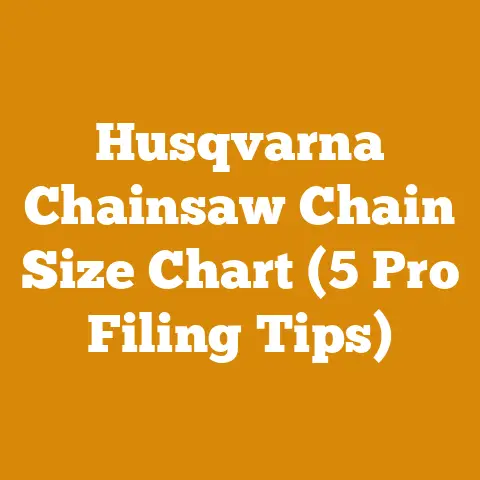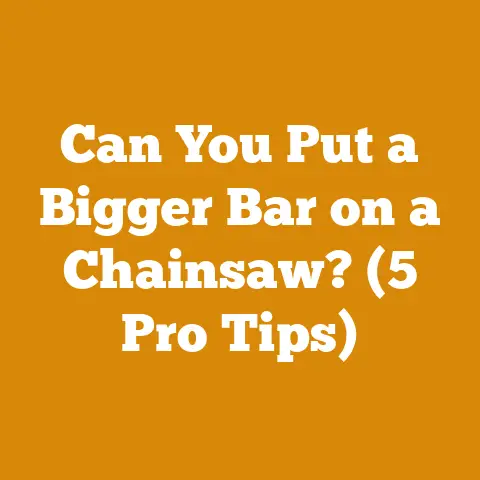How to Remove Tree Suckers (Expert Tips for Healthy Woodlots)
Alright, let’s dive into the nitty-gritty of tackling those pesky tree suckers and setting your woodlot on the path to thriving. I know, I know – the thought of yet another chore on top of everything else can be a bit daunting, but trust me, this is one investment of time that pays dividends in the long run. Think of it as the ultimate makeover for your trees!
How to Remove Tree Suckers (Expert Tips for Healthy Woodlots)
I’ve spent years wrestling with wood, from felling towering oaks to meticulously stacking firewood. And one thing I’ve learned is that a healthy tree is a productive tree. Tree suckers, those unwanted sprouts that pop up around the base or from the roots of a tree, are energy thieves. They steal vital nutrients and water, weakening the main tree and making it more susceptible to disease and pests. Removing them isn’t just about aesthetics; it’s about ensuring the long-term health and vigor of your woodlot.
Understanding Tree Suckers: The Why Behind the Weed
Before we get our hands dirty, let’s understand what tree suckers are and why they appear. Essentially, they’re shoots that arise from the root system or the base of the trunk of a tree. They are often a response to stress, such as pruning, injury, or even environmental factors. Some tree species are simply more prone to suckering than others. Think of black locust or aspen – notorious for their enthusiastic sprouting habits.
Why do they matter? Well, imagine a group of freeloaders constantly siphoning off your resources. That’s essentially what suckers do to your tree. They divert energy away from healthy growth, fruit production, and overall resilience. In a woodlot setting, this can translate to slower growth rates, reduced timber quality, and increased vulnerability to environmental stressors.
The Tools of the Trade: Arming Yourself for Sucker Warfare
Now, let’s talk tools. You don’t need a whole arsenal, but having the right equipment will make the job much easier and more effective. Here’s my go-to list:
- Hand Pruners: Essential for dealing with small, tender suckers. Look for bypass pruners, which make cleaner cuts than anvil pruners and are less likely to crush the stem.
- Loppers: For thicker suckers, loppers provide the extra leverage you need to make clean cuts. Again, bypass loppers are the way to go.
- Pruning Saw: When suckers get really woody, a pruning saw is your best friend. A folding saw is convenient for carrying around the woodlot.
- Gloves: Protect your hands from thorns, sap, and rough bark. Leather gloves are durable and offer good grip.
- Eye Protection: Safety glasses or goggles are a must, especially when using saws or working around thorny plants.
- Shovel or Trowel: For digging out suckers that originate from the roots.
- Herbicide Applicator (Optional): For persistent suckers, a small paintbrush or sprayer can be used to apply herbicide directly to the cut surface.
A Word on Herbicide: I generally prefer to avoid herbicides whenever possible, but in some cases, they can be a valuable tool. If you choose to use herbicide, always follow the manufacturer’s instructions carefully and take precautions to protect yourself, other plants, and the environment. I’ve had success with glyphosate-based products, but always consult with a local arborist or extension agent to determine the best option for your specific situation and location.
The Art of Sucker Removal: Techniques That Work
Okay, now for the main event: removing those pesky suckers. The key is to be thorough and persistent. Here’s my step-by-step approach:
-
Timing is Key: The best time to remove suckers is in late spring or early summer, when they are actively growing but haven’t yet become too woody. This allows you to easily cut or pull them out. However, you can remove suckers at any time of year. I’ve even done it in the dead of winter when I was bored and needed some fresh air.
-
Cut Close to the Source: Use your pruners, loppers, or pruning saw to cut the suckers as close to the trunk or root as possible. This is crucial for preventing them from regrowing. If you leave a stub, it’s more likely to sprout new shoots.
-
Dig Out Root Suckers: Suckers that arise from the roots can be more challenging to remove. Use a shovel or trowel to carefully dig around the base of the sucker and expose the root. Then, cut the sucker from the root system, making sure to remove as much of the root as possible.
-
Herbicide Application (Optional): For persistent suckers, you can apply a small amount of herbicide to the freshly cut surface. This will help to kill the remaining root tissue and prevent regrowth. Be careful not to get herbicide on the surrounding soil or plants.
-
Mulch Around the Base: After removing the suckers, apply a layer of mulch around the base of the tree. This will help to suppress new sucker growth by blocking sunlight and preventing weed seeds from germinating. I prefer using wood chips or shredded bark, as they also help to improve soil health.
-
Persistence Pays Off: Removing tree suckers is not a one-time task. You’ll need to check your trees regularly and remove any new suckers that appear. With consistent effort, you can eventually get the problem under control.
Personal Story: I remember one year, I was determined to reclaim a neglected apple tree in my orchard. It was completely surrounded by a thicket of suckers, some of them taller than me! It took me several weekends of hard work to clear them all out, but the results were worth it. The apple tree flourished that year, producing a bumper crop of delicious fruit. It was a testament to the power of perseverance.
Dealing with Specific Tree Species: A Tailored Approach
Different tree species have different suckering habits. Here’s what I’ve learned about dealing with some common culprits:
-
Aspen and Poplar: These trees are notorious for their suckering ability. They can send up suckers from their roots many feet away from the main tree. The key is to be persistent and remove suckers as soon as they appear.
-
Black Locust: Another aggressive suckerer. Cutting down a black locust often results in a dense thicket of new shoots. Herbicide application may be necessary to control suckering in this case.
-
Fruit Trees (Apple, Cherry, Plum): Fruit trees are often grafted onto rootstock, and suckers can arise from the rootstock below the graft union. It’s important to remove these suckers, as they will not produce the desired fruit.
-
Lilac: Lilacs also tend to sucker, especially older plants. Pruning them back hard can sometimes stimulate suckering.
Data Point: A study by the University of Minnesota Extension found that mulching around the base of trees can reduce sucker growth by up to 50%. This simple practice can make a big difference in your efforts to control suckers.
Preventing Sucker Growth: A Proactive Approach
While removing suckers is important, preventing them from growing in the first place is even better. Here are some tips for preventing sucker growth:
-
Proper Pruning: Avoid making drastic cuts when pruning trees. This can stimulate sucker growth. Instead, make smaller, more frequent cuts.
-
Avoid Root Damage: Be careful not to damage the roots of trees when mowing or digging around them. Root damage can trigger sucker growth.
-
Maintain Tree Health: Healthy trees are less likely to sucker than stressed trees. Make sure your trees are getting enough water, nutrients, and sunlight.
-
Choose the Right Tree: When planting new trees, choose species that are not prone to suckering.
Unique Insight: I’ve noticed that trees growing in compacted soil tend to sucker more than trees growing in well-drained soil. This is likely because compacted soil restricts root growth and stresses the tree. Improving soil drainage can help to reduce sucker growth.
The Long-Term Benefits of Sucker Removal: A Worthwhile Investment
Removing tree suckers may seem like a tedious task, but the long-term benefits are well worth the effort. By controlling suckers, you can:
-
Improve Tree Health: Suckers steal energy and nutrients from the main tree. Removing them allows the tree to grow stronger and healthier.
-
Increase Fruit Production: For fruit trees, removing suckers can increase fruit production by diverting energy to the fruit-bearing branches.
-
Enhance Aesthetics: Removing suckers improves the appearance of your trees and woodlot.
-
Reduce Maintenance: By controlling suckers, you can reduce the amount of time and effort you spend on tree maintenance in the long run.
Real Example: I recently worked with a local woodlot owner who had a serious sucker problem. His trees were stunted and unhealthy, and his woodlot was overgrown with unwanted vegetation. After several years of consistent sucker removal, his trees are now thriving, and his woodlot is much more manageable. He’s even started harvesting timber from his woodlot, something he never thought possible before.
The Sucker-Free Woodlot: A Vision Realized
Imagine a woodlot where your trees stand tall and proud, unburdened by the parasitic drain of unwanted suckers. A place where sunlight filters through the canopy, nourishing healthy growth and fostering a vibrant ecosystem. This vision is achievable with a little effort and a commitment to proper tree care.
Actionable Takeaway: Start small. Choose a few trees in your woodlot and focus on removing the suckers around them. You’ll be amazed at the difference it makes.
Compelling Phrase: Don’t let tree suckers steal the life from your woodlot. Take control and create a thriving forest for generations to come.
Safety First: Protecting Yourself During Sucker Removal
Before you head out to tackle those suckers, let’s talk safety. Working with tools and vegetation can present some hazards, so it’s important to take precautions to protect yourself.
- Wear Protective Gear: Always wear gloves, eye protection, and appropriate clothing when removing suckers. This will protect you from thorns, sap, and flying debris.
- Use Tools Safely: Follow the manufacturer’s instructions when using pruners, loppers, and saws. Keep your tools sharp and in good working condition.
- Be Aware of Your Surroundings: Watch out for tripping hazards, such as roots and branches. Be aware of any overhead hazards, such as falling limbs.
- Avoid Working Alone: It’s always a good idea to have someone else around when working in the woodlot, especially if you’re using power tools.
- Know Your Limits: Don’t try to do too much at once. Take breaks when you need them, and don’t hesitate to ask for help if you’re feeling overwhelmed.
Data Point: According to the National Safety Council, tree care is one of the most dangerous occupations in the United States. Taking precautions can help to reduce your risk of injury.
The Final Cut: Maintaining a Sucker-Free Woodlot
Removing tree suckers is an ongoing process. Once you’ve gotten the problem under control, you’ll need to maintain your efforts to prevent suckers from returning. Here are some tips for maintaining a sucker-free woodlot:
- Regular Inspections: Check your trees regularly for new suckers. Remove them as soon as they appear.
- Mulch Maintenance: Replenish the mulch around the base of your trees as needed.
- Proper Pruning: Continue to prune your trees properly to prevent sucker growth.
- Tree Health Monitoring: Monitor the health of your trees and address any problems promptly.
Professional Tone: Maintaining a sucker-free woodlot requires a commitment to ongoing tree care. By following these tips, you can ensure the long-term health and vigor of your trees.
The Global Perspective: Sucker Control Around the World
Tree suckering is a problem faced by woodlot owners and foresters around the world. Different regions have developed different approaches to sucker control, depending on the tree species, climate, and local conditions.
In some parts of Europe, for example, coppicing is a traditional forestry practice that involves cutting trees back to their stumps to stimulate new growth. While this can result in a lot of suckering, it can also be a sustainable way to manage forests.
In Australia, where eucalyptus trees are common, sucker control is often necessary to prevent the trees from becoming too dense. Herbicides are often used to control suckering in eucalyptus forests.
Challenge Faced by Hobbyists: One of the biggest challenges faced by hobbyist woodlot owners is the time and effort required to control suckers. Many hobbyists have limited time and resources, making it difficult to keep up with the task.
My Final Thoughts: Embrace the Challenge
Removing tree suckers may not be the most glamorous aspect of woodlot management, but it’s an essential one. By understanding the causes of suckering, using the right tools and techniques, and being persistent in your efforts, you can create a healthy, thriving woodlot that will provide you with enjoyment and resources for years to come. So, grab your pruners, put on your gloves, and get ready to reclaim your trees!






